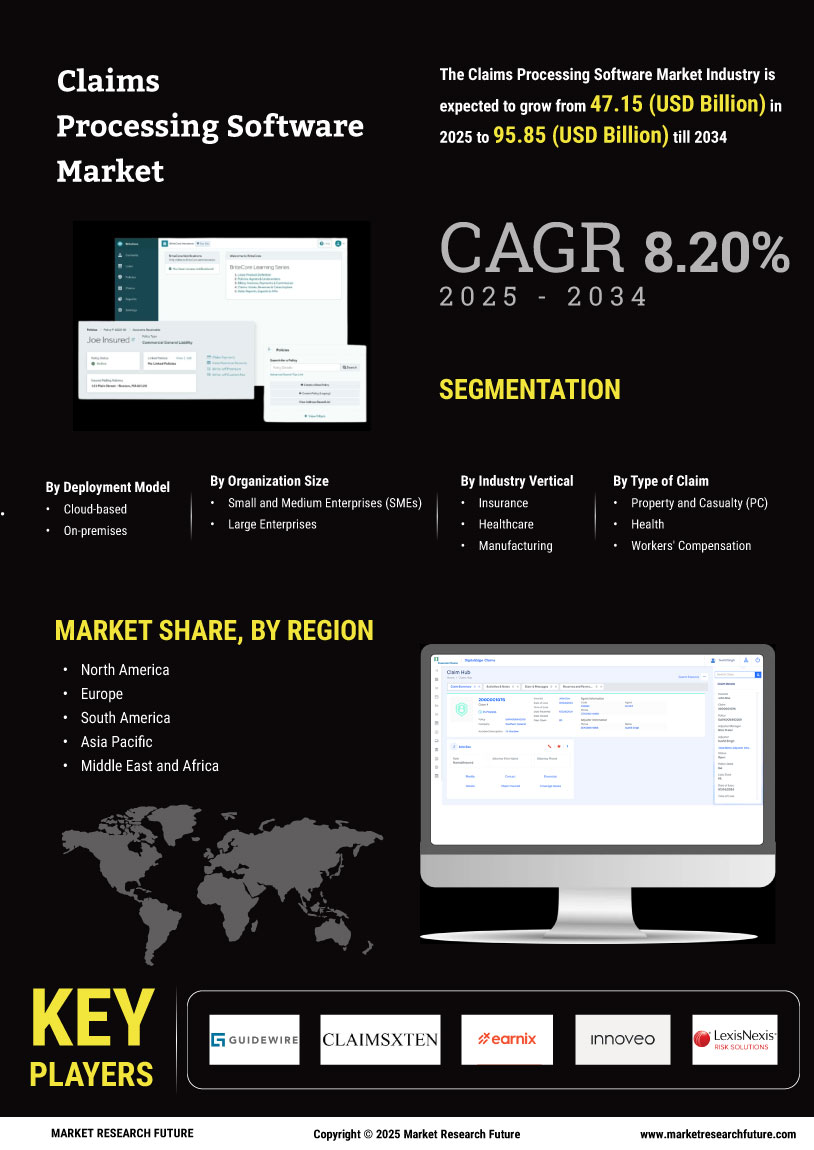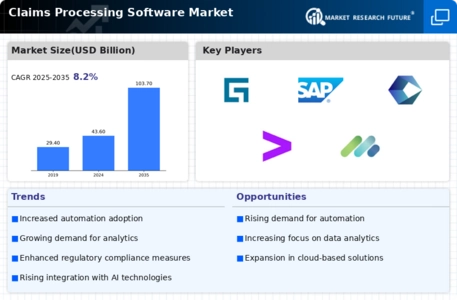Claims Processing Software Market Summary
The Global Claims Processing Software Market is projected to grow significantly from 43.58 USD Billion in 2024 to 103.72 USD Billion by 2035.
Key Market Trends & Highlights
Claims Processing Software Key Trends and Highlights
- The market is expected to experience a compound annual growth rate (CAGR) of 8.2 percent from 2025 to 2035.
- By 2035, the market valuation is anticipated to reach 103.7 USD Billion, indicating robust growth potential.
- in 2024, the market is valued at 43.58 USD Billion, laying a strong foundation for future expansion.
- Growing adoption of automation technologies due to increasing efficiency demands is a major market driver.
Market Size & Forecast
| 2024 Market Size | 43.58 (USD Billion) |
| 2035 Market Size | 103.72 (USD Billion) |
| CAGR (2025-2035) | 8.20% |
Major Players
Guidewire Software, Inc., Verisk Analytics, Inc., LexisNexis Risk Solutions Group, SAP SE, Duck Creek Technologies, Inc., Cognizant, Accenture, Sapiens International Corporation, Majesco, ISO Claims Partners
















